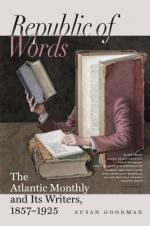The effect of a picture is increased by isolation and surprise. I never realized the physiognomical traits of Madame de Maintenon, until her portrait was encountered in a solitary country-house, of whose drawing-room it was the sole ornament; and the romance of a miniature by Malbone first came home to me, when an ancient dame, in the costume of the last century, with trembling fingers drew one of her husband from an antique cabinet, and descanted on the manly beauty of the deceased original, and the graceful genius of the young and lamented artist. Hazlitt wrote an ingenious essay on “A Portrait by Vandyck,” which gives us an adequate idea of what such a masterpiece is to the eye and mind of genuine artistic perception and sympathy. Few sensations, or rather sentiments, are more inextricably made up of pleasure and sadness than that with which we contemplate (as is not infrequent in some old gallery of Europe) a portrait which deeply interests or powerfully attracts us, and whose history is irrevocably lost. A better homily on the evanescence of human love and fame can scarcely be imagined: a face alive with moral personality and human charms, such as win and warm our stranger eyes, yet the name, subject, artist, owner, all lost in oblivion! To pause before an interesting but “unknown portrait” is to read an elegy as pathetic as Gray’s.
The mechanical processes by which Nature is so closely imitated, and the increase of which during the last few years is one of the most remarkable facts in science, may at the first glance appear to have lessened the marvellous in Art, by making available to all the exact representation of still-life. But, when duly considered, the effect is precisely the reverse; for exactly in proportion as we become familiar with the mechanical production of the similitudes of natural and artificial objects, do we instinctively demand higher powers of conception, greater spiritual expression in the artist. The discovery of Daguerre and its numerous improvements, and the unrivalled precision attained by Photography, render exact imitation no longer a miracle of crayon or palette; these must now create as well as reflect, invent and harmonize as well as copy, bring out the soul of the individual and of the landscape, or their achievements will be neglected in favor of the fac-similes obtainable through sunshine and chemistry. The best photographs of architecture, statuary, ruins, and, in some cases, of celebrated pictures, are satisfactory




